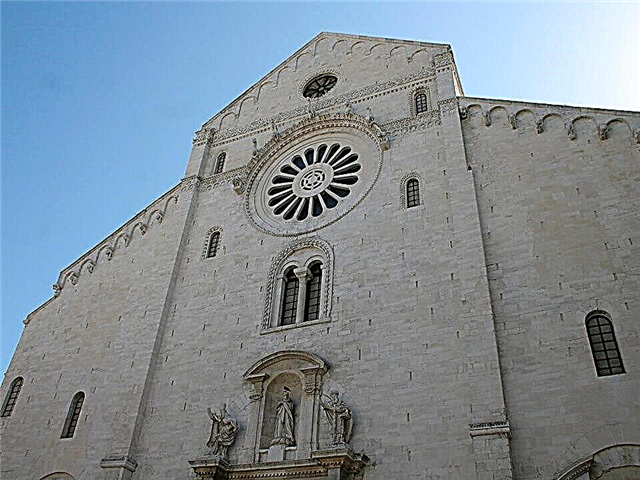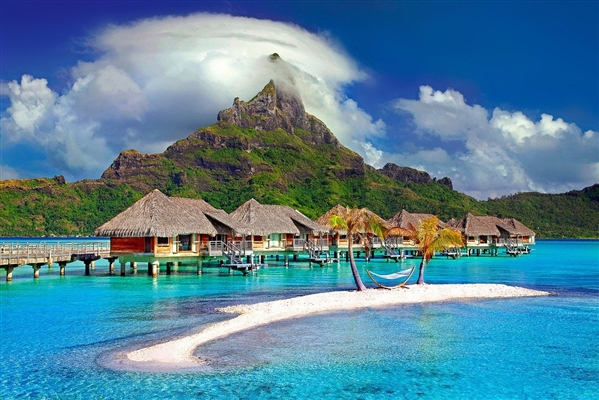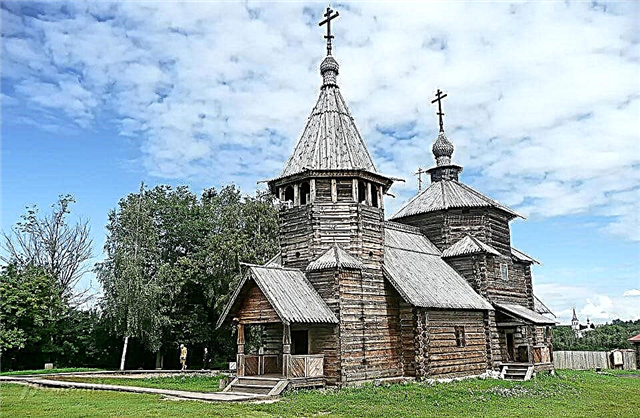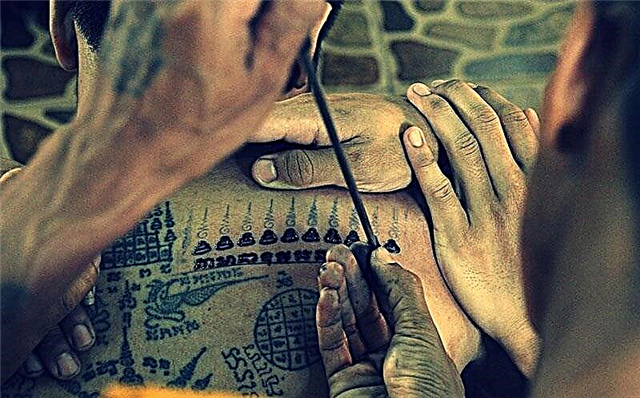Nice is the heart of the French Riviera. The seaside town has a long-standing reputation among tourists. Travelers are interested in exploring the sights of Nice. The list of popular sites includes museums, ancient buildings, temple complexes, etc. It is difficult to see the whole city in 1 day, therefore a list of the most interesting sights of Nice was compiled for curious tourists. He will help you navigate the area and choose the most attractive objects for yourself.
English Embankment

The street that runs along the coast, back in the 19th century. was chosen by the British. Residents of foggy Albion built luxurious villas overlooking the sea and in the evenings made a promenade along the road. Therefore, the street began to be called "The Way of the English", and later the Promenade des Anglais. Nowadays it is the most popular walking place for vacationers and residents of the city.
The dimensions of the boulevard (length - 5 km, width 8 m) allow you to enjoy the view of the sea and ancient architecture. Among the most memorable ensembles is the Mediterranean Palace. It houses a theater, casino and hotel. The Promenade des Anglais has long become not only a symbol of the city, but of the entire French Riviera. Walking along it will give you the opportunity to get acquainted with the history of the city and have a good time.
Hotel Negresco

For more than 100 years, the hotel "Negresco" has served as the decoration of the Promenade des Anglais. The Renaissance building was commissioned by a Hungarian magnate and named after him. Since its inception, the hotel has been intended for the rest of the rich and famous tourists. It stayed during their stay on the Riviera: J. Cocteau, E. Hemingway, S. Dali, M. Dietrich, C. Chanel, musicians of the Beatles.
It offers guests 145 luxurious rooms, each of which has a unique design. The interior is striking in its luxurious decoration. The hall is illuminated by a huge crystal chandelier (2 m in diameter). The floor is covered with a precious 17th century carpet created for the French queen Maria de Medici. The majestic pink dome of the 6-storey building distinguishes the building from other buildings on the embankment.
Roman hill

Archaeological excavations have proven that in antiquity, an ancient Roman settlement existed on the site of modern Nice. It was founded by people from the Apennine Peninsula in the 1st century. BC e and received the name Tsemenelum. The settlement was the main stronghold of the Romans on the Riviera. However, the Romans did not manage to gain a foothold on the coast for a long time. Already in the 5th century. the village fell into desolation and was abandoned by people.
Archaeologists managed to unearth several ancient buildings that have survived well to our time. On the so-called "Roman Hill" history buffs can see the remains of residential buildings, an amphitheater, and baths. All kinds of household items found at the excavation site were transferred to the Archaeological Museum of the city. Surveys on the territory of the Cimiez quarter, begun in the middle of the last century, continue.
Castle hill

You can enjoy a panoramic view of the city from the platform at the top of the Castle Hill, otherwise called the Chateau hill. It rises above the city, and in ancient times it was of great strategic importance. In the Middle Ages, a feudal castle was located on the mountain, the owners of which controlled the adjacent territory and the sea coast. A few fragments have survived from the ancient citadel. Every hour a cannon fires on the mountain.
Bellanda Tower and St. Mary's Basilica are of interest for tourists. The tower was used as a hotel for a long time, and then it was transformed into the Maritime Museum. In addition to architectural attractions, travelers enjoy exploring the city park. It presents a variety of plants of the Mediterranean flora, as well as species imported from other continents.
Chateau park

At the top of the Castle Hill is the Chateau Park. Its viewing platforms offer a delightful view of the city and the sea area. To climb the mountain (90 m), staircases and a special lift have been built. The park was laid out at the beginning of the 19th century. by the city authorities at the direction of the Duke of Savoy. The recreation area successfully combines numerous alleys and lawns with artificial reservoirs. For the convenience of visitors, playgrounds and snack bars are equipped.
The lower terrace of the Castle Hill is occupied by an old necropolis. It became the resting place of not only townspeople, but also foreign citizens: A. Herzen, G. Leroux, E. Jellinek and others. The cemetery is open to the public every day from 8 am to 6 pm.
The Château Park is open daily for free admission. Opening hours:
- in the summer - 9 - 20 hours;
- in winter - 9 am - 7 pm
Old city

Vieux-Nys is rightfully considered the most picturesque area of the city. Town planning began from its streets in the 16th and 19th centuries. The winding sidewalks go up to the top of the hill, then go down. There are many small shops, bistros and cafes along the narrow paths. The atmosphere of the Old City is saturated with the spirit of bygone eras. Most of the buildings were built by order of the aristocrats. Their architectural delights attract the eye and remain in the memory for a long time. In order to preserve the heritage of the past for future generations, the Vieux-Nys quarter was taken under the protection of the world organization UNESCO. The main "highlights" of the Old Town are the Chapel of Mercy and the Palace of Justice. The chapel was built in the middle of the 18th century. based on sketches by B. Witton. She belonged to an order that helps those in need.
Port of Limpia

The geographical location on the seashore necessitated the creation of a reliable harbor that could meet the needs of the city. By order of King Charles Emmanuel III, it was decided to lay the port in the eastern part of the Gulf of Angels. To provide access for large-sized vessels, the bottom was deepened, and the water area was expanded. The port of Limpia began to function fully in the middle of the 19th century. It is capable of receiving both huge cruise ships and small yachts.
Ferries depart daily from the pier, linking mainland France with Corsica. The most famous attraction of Lympia is the old lighthouse. A stone tower appeared at the end of the breakwater at the end of the 19th century. During World War II, it was destroyed and then rebuilt. The height of the lighthouse (21 m) allows you to see its light at a distance of 40 km.
Place Massena

The parade ground near the Promenade des Anglais is distinguished by an unusual combination of antiquity and futurism. Until the middle of the 19th century. the square was called Prigorodnaya until it was renamed in honor of Napoleonic Marshal A. Masséna. Park recreation areas adjoin the forum in the east and west. The northern and southern parts are bordered by buildings from the 19th century. The fountain of the Sun occupies a central position. Its design was developed by A. Jagno in 1956.
As conceived by the author, the bowl of water is surrounded by bronze figures of ancient Greek deities. In the middle rises Apollo - the god of the Sun. No less interesting is the modern installation invented by the sculptor from Catalonia, Jaum Plens. She represents 7 seated rubber men who are called upon to personify the earthly continents. The composition is called "Conversation in Nice".
Garibaldi Square

The Garibaldi Square is recognized as the official center of the city. It is located in the northern part of the Ville-Nys quarter. Open space has long been an abandoned wasteland. However, at the end of the 18th century. the site has changed. By order of the king, the Swiss architect A. Spinelli took over the arrangement of the parade ground. He designed Italian-style buildings for perimeter development.
The chapel of the Holy Sepulcher appeared at the southern end of the forum. Its balcony served as a place for a solemn reception of distinguished guests. At the end of the 19th century. the square was officially named after the native of Nice, Giuseppe Garibaldi, the famous freedom fighter of the Apennines.His monument is one of the main attractions, along with the Museum of Natural History, the houses of J.-B. Barl and the Avigdor family. The area is famous for catering establishments serving delicious seafood dishes.
Marc Chagall Museum

A native of Vitebsk, Marc Chagall left his mark on the shores of the French Riviera. The famous avant-garde artist presented as a gift a cycle of 17 paintings covering biblical subjects. The source of inspiration was the Old Testament. Author's canvases became the core for the creation of a separate museum. Chagall actively contributed to the arrangement of the exposition. In addition to paintings, the collection was replenished with mosaics, tapestries, stained glass windows, and sculptures. The M. Chagall Museum is deservedly proud of the most complete collection of the great master's creative heritage (over 700). In addition to the exhibition halls, the museum has its own stage area. Concerts are regularly held here.
The museum is open daily:
- April - November (10-17 hours);
- December - March (10-18 hours).
The subscription price is 7.5 €, for beneficiaries - 5.5 €.
Matisse Museum

A noticeable imprint on the work of the outstanding French painter A. Matisse left a stay in Nice in the 1920s. 20th century In his house on the Cote d'Azur, he created stage costumes and scenery for the ballet "Nightingale" by I. Stravinsky. The elegant cycle "Odalisque", depicting women in the oriental style, dates back to the same period. The city authorities decided to consolidate the memory of the famous compatriot and established a museum named after him. A villa of the 18th century was allocated to accommodate the exposition.
Visitors can enjoy the original work of the author and trace the path of his artistic development. One of the 18 halls of the museum is dedicated to paper figures. Their creation was a kind of hobby for Matisse. The museum is open every day, except Tuesday (10-18 hours). To enter, it is enough to present a single museum ticket for 10 €.
Archaeological Museum

Artifacts telling about the ancient history of the region are collected in the Archaeological Museum. Excavations carried out on the Cimiez hill have shed light on the distant past. Scientists have established that the Roman settlement of Cemenelum was the predecessor of Nice. 10 thousand people lived in it at the same time. During the excavations, various objects were found: tools, dishes, jewelry, money, works of art, etc.
The finds became the basis for the formation of the museum exposition. It was opened for all to see in 1960. In the late 80s. the museum has moved to a separate building. Now the institution consists of 2 buildings dedicated to ancient history. There is a shop at the museum where copies of exhibits are sold. Open daily (except Tuesday) from 10 am to 6 pm Admission costs 6 €.
Museum of Contemporary Art MAMAC

In 1990, an unusual art object appeared in the center. It is a pair of glass skyscrapers connected by passages. This is what the Museum of Modern Art looks like. The project was developed by French architects I. Bayard and A. Vidal. The interior space is divided into 3 levels. Two are given to house a permanent exhibition. The third one is reserved for temporary art exhibitions. There is a garden on the glass roof.
The collection of the museum is very diverse. It contains works by recognized world art gurus (Warhol, Liechtenstein) and local authors (Klein, Saint Phalle). Foundations include St. 400 titles. The core of the exposition is made up of canvases in the avant-garde style, made by painters from Europe and America. Opening hours every day (except Monday) from 10 to 18 hours.
Museum of Fine Arts

Palace of Prince Kochubei in the 20s passed into the ownership of the city. Local authorities ordered the conversion of the villa into a Museum of Fine Arts. The work was carried out under the guidance of the artist J. Cheret. The collection was selected very carefully. In terms of the number of masterpieces per unit area, the museum can compete with the recognized leaders - the Louvre and the Hermitage.
The public displays works from different historical eras and artistic trends: primitivism, classicism, impressionism. Part of the exhibition is represented by canvases by artists whose work was associated with Nice. In the halls of the museum, visitors can see the paintings of the Van Loo dynasty, J. Fragonard, C. Monet, F. Ruda and others. The museum is open from 10 am to 6 pm daily. The ticket price is 10 €.
Asian Art Museum

At the end of the last century, another interesting museum appeared. It is dedicated to the cultural heritage of the peoples of Asia. The complex of 4 cubic buildings is located in Phoenix Park. The author of the project was the architect from Japan K. Tange. According to his plan, the structure should be as open as possible to the light. Therefore, during the construction, huge glass panels were used, enclosed in walls of snow-white marble. Natural light allows you to reveal the beauty of the collected exhibits.
The museum is divided into 4 parts: Japanese, Chinese, Indian, Cambodian. The funds contain over 200 artifacts. With the aim of a deeper penetration into Asian culture, employees conduct seminars, master classes (ikebana, calligraphy).
Working hours:
- 10-18 hours (May - October 15);
- 10-17 hours (October 16 - April).
Closed on Tuesday. Free admission.
Massena Museum

The former residence of Marshal of Napoleonic troops A. Masséna in the 20th century. was turned into a museum. It bears the name of the famous commander and is dedicated to the historical past of the city. The basis of the exposition was the personal collection of V. Massena. The patron bequeathed his collection as a gift to his native city. Currently, many valuable rarities are kept in the museum funds: personal belongings of Emperor Bonaparte, porcelain items (9-12 centuries), posters in the art nouveau style, old photographs. Visitors can consistently trace the development of Nice from ancient times to the middle of the last century. The museum is open daily (10-18 hours). Closed on Tuesday. The subscription costs 6 €.
Palace of Justice

The austere classical architecture of the Palace of Justice attracts the attention of many tourists. The building is located in the central part of the city. The plaza in front of the façade is often the venue for the performances of troupes of street performers and musicians. Spectators sit comfortably on the steps of a large staircase. There are many eateries and bistros nearby. On Saturdays, collectors of books, works of art, postcards gather on the square.
The Palace of Justice was built at the end of the 19th century. on the site of the monastery of the Dominican Order destroyed during the French Revolution. The new building for lawyers and lawyers was erected in just 2 years (1883 -1885). The mirror pair of the Palace of Justice is the house opposite - the Ruska Palace. It houses the higher court. Unauthorized visitors are not allowed inside the premises.
Opera theatre

The first building for an opera house appeared at the end of the 18th century. It was made in Italian style and successfully combined the luxury of the auditorium with the powerful acoustics of the stage. Construction work was carried out under the direction of the Italian architect B. Brunati. However, in 1881 the premises were completely burnt out during a terrible fire. The creation of a new project was entrusted to Eiffel's student, F. On, who proposed to give the body a classicist look and strengthen it with a metal frame.
The interior decoration was carried out by the artist E. Costa. His frescoes on the theme of ancient mythology have become a true decoration of the Melpomene temple. Stars of the first magnitude in the genre of classical music have repeatedly performed on the stage. Tours are held on Mondays at 2 pm (duration 1.5 hours).
Cathedral of Saint Nicholas

Nicholas Cathedral is the largest religious building owned by the Russian Orthodox Church abroad. The gilded domes of church domes are clearly visible from a distance and remind Russians of their distant homeland. In 1865, the future heir to the Romanov dynasty, the son of Emperor Alexander II, died in Nice. It was decided to build a temple at the place of his death. The St. Nicholas Cathedral was laid in 1902. Construction lasted 10 years.The highest quality materials were used in the construction of the building.
To decorate the interior, some of the icons were donated by the royal family. The face of St. Nicholas the Wonderworker takes an honorable place. For almost 100 years, the church belonged to the Orthodox Association, and since 2011 it has been transferred to the possession of the Russian Federation. The temple is open daily (9 am - 6 pm). Break from 12 to 14 hours. Admission is free.
Cathedral of Saint Reparata

One of the most ancient religious buildings within the city is the church. Holy Recipes. The building resembles the Cathedral of Saint Susanna in Rome. It has a traditional building plan - in the shape of a cross. The central part is crowned with a dome covered with tiles. The facade is made in the Baroque style. The inner space is divided into 10 chapels. Altar 17th century surrounded by frescoes depicting the first bishops of Nice.
Above the altar is a painting depicting the patroness of Nice, Saint Reparata. According to legend, she was martyred. The angels took her body and took her by boat to the coast of the Riviera. Every year (1st Sunday in October) there is a solemn procession with a statue of the saint from the temple of Francis to the temple of Reparata.
Time to visit:
- Monday - Friday (9 am – 12 pm and 2 pm – 6 pm);
- Saturday (9 am - 12 pm and 2 pm - 7.30 pm);
- Sunday (9 am - 1 pm and 3 pm - 6 pm).
The entrance is free.
Basilica of Notre Dame

From any end of the city you can see the dome of the largest church on the coast (65 m high), consecrated in memory of the Virgin Mary. Notre Dame was built in the 60s. 19th century The architects gave the cathedral a Gothic look, so it partly resembles its metropolitan counterpart. The central part of the facade is decorated with a glass rose. Her stained glass windows are dedicated to the history of the Dormition of the Most Holy Theotokos. Inside, visitors can see a copy of the famous painting "The Holy Family" by B. Murillo, stained glass windows of the 19th century, wooden statues of the Virgin Mary.
The luxurious decoration of Notre - Dame - de - Nys gave it the right to be considered the most beautiful Catholic cathedral of the French Riviera. The church is also a cultural institution. It often hosts classical music concerts. The Basilica is open every day from 8.30 am to 12 pm and from 2 pm to 7 pm Admission is free.
Observatory

The observatory has been operating for almost 150 years. Its creation was initiated by the French financier R. Bischofsheim. He allocated funds for the construction of the building and equipping it with optical equipment. G. Eiffel and C. Garnier became the co-authors of the project. The architectural feature of the observatory is a huge (24 m diameter) rotating dome. A powerful telescope is installed inside. Thanks to him, many new heavenly bodies were discovered.
During its existence, the observatory has repeatedly changed owners. At the end of the 80s of the 20th century. she became part of the observatory of the Cote d'Azur. Guided tours are held three times a week (Wednesday, Saturday, Sunday) at 14.45. The ticket price for adults is 6 €, for children - 3 €. On specially agreed days, visitors are given the opportunity to look at the sky through a telescope.
Fort Alban

During the Middle Ages, the Mediterranean coast suffered from attacks by the Turkish fleet. To protect the settlements on the hills, defensive fortifications were erected along the coast. A similar fortification was built on the Mont-Alban hill. White ("alba") rocks gave the name not only to the mountain, but also to the fortress. The citadel has been well preserved to this day.
Tourists have the opportunity to bypass the perimeter of the fort, and then proceed to the observation deck at the top of Mont Alban. It offers a beautiful view of the eastern part and the sea coast. The guardroom with wall frescoes is also of interest. A special lift functions from the foot of the hill to the top. For a trip to the fort with a guide, you have to pay 7 - 10 €. Entry to the territory is free.
Monument to the Fallen in 1914-1918

A monument erected in front of the Castle Hill is dedicated to the memory of the natives who died during the 1st World War. In this way, the city authorities wanted to honor the feat of 4 thousand people who died on the battlefields from 1914 to 1918. The project of the monument was approved in 1918, but its construction began only in 1924. Subsequently, the list was replenished with the names of the military who were killed during the Second World War, in armed confrontations with the participation of France (Algeria, Indochina).
The memorial is covered with bas-reliefs depicting soldiers from different branches of the armed forces - infantrymen, sailors, pilots, engineers. The height of the stele is 32 meters. The place where the monument is erected is very symbolic, since the Castle Hill rises above the entire city. The lower part of the mountain is occupied by the old memorial cemetery.
Phoenix Park

Initially, the park was conceived as a botanical garden, where a large collection of rare plants was collected. Gradually, the green zone was settled by representatives of the exotic fauna. Currently, visitors to Phoenix can see 2.5 thousand species of plants, as well as observe the life of fish, amphibians, birds, mammals from different parts of the world. The park is divided into 12 zones.
The largest greenhouse in Europe and an island with prehistoric flora are very popular. The onset of each hour is celebrated with a musical fountain. Its jets dynamically change to the sounds of classical pieces.
The park is open all year round. Visiting times:
- “Summer hours” (April - September) from 9.30 am to 7.30 pm;
- "Winter hours" (October - March) from 9.30 am to 6 pm.
The park recreation area is located in the west of the city.











